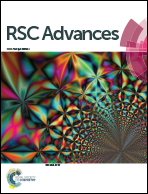Combination of ultrasound and Fenton treatment for improving the hydrolysis and acidification of waste activated sludge
Abstract
The effects of ultrasound (US), Fenton treatment, and combined US/Fenton treatment as physicochemical pretreatment processes for waste activated sludge (WAS) hydrolysis and acidification were investigated in this study. The soluble carbohydrate concentrations after US/Fenton treatment were 2.36-fold, 2.17-fold and 17.11-fold more than that obtained by the Fenton treatment, US and control tests, respectively. The corresponding concentrations of soluble protein after US/Fenton treatment were 2.43-fold, 1.47-fold and 13.37-fold more than that obtained by the Fenton treatment, US and control tests, respectively. The degree of sludge disintegration (DDCOD) for the US/Fenton treatment was 15.4%, whereas it was only 9.97% and 3.18% for the US and Fenton tests. The maximum accumulation of volatile fatty acids (VFAs) was obtained by the US/Fenton pretreatment (4594 mg COD L−1), which presented obvious advantages over US (3485 mg COD L−1) and Fenton (2700 mg COD L−1) treatments. The combination of the US and Fenton treatments had a synergetic effect on improving the hydrolysis and subsequent acidification of WAS.


 Please wait while we load your content...
Please wait while we load your content...